Is Dry Tortugas National Park Worth The Trip?
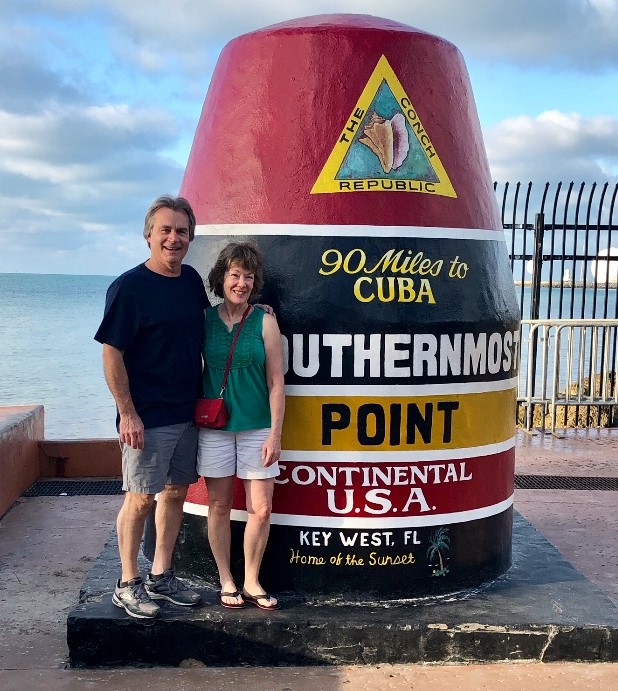
When we made plans to go to Key West, David and I looked forward to rowdy happy hours, great music, seafood to die for and Key Lime pie. We knew that tourists flock to Mallory Square, The Ernest Hemingway Home and Museum, and posing for a photo at the colorful buoy that stands at the southernmost point of the United States. (the southernmost point open to the public, that is. There is a parcel of land a bit more south that is owned by the Navy) But when our traveling companions asked, “How about a seaplane flight to the Dry Tortugas National Park?”, we responded, “Huh?”
Not only were the Dry Tortugas a place that we hadn’t been, it was a place we’d never even heard of! So of course, we were all in. Turns out that our visit to The Place We Never Heard Of was the highlight of our trip to Key West!
The Dry Tortugas are the westernmost islands of the Florida Keys. These seven small islands lie about 67 miles west of Key West and are accessible only by boat or by seaplane. Dry Tortugas National Park is the least visited National Park in the United States, and is home to Fort Jefferson, a massive fort built in the 19th century to protect the southern coast of the United States from Caribbean pirates.
Ponce de Leon, a Spanish conquistador, is given credit for discovering The Dry Tortugas in 1513. The waters surrounding the islands were home to massive sea turtles, and turtle meat was an important source of food for sailors of that time. Ponce de Leon originally named the islands Las Tortugas, the Spanish word for turtles. The word Dry was added later, to inform other sailors that there was no fresh water to be found on the islands.
Fort Jefferson is located on an island called Garden Key. The only way to access the island is by seaplane or ferry. No worries: getting there is half the fun!
While pricey, we are so glad that we opted for the seaplane. The flight was an incredible adventure in and of itself. Each passenger received a pair of headphones, and our pilot shared all sorts of information with us throughout the journey. For a good part of the way, we flew over clear, shallow water known as “The Flats.” Our pilot made sure to point out sharks, sea turtles, sting rays and dolphins that were clearly visible from the air. He also showed us two shipwrecks: The Arbutus and the Patricia, a World War II boat that was sunk by the Navy for bombing practice. We highly recommend the seaplane company that we flew with. Check them out at Key West Seaplane Charters.

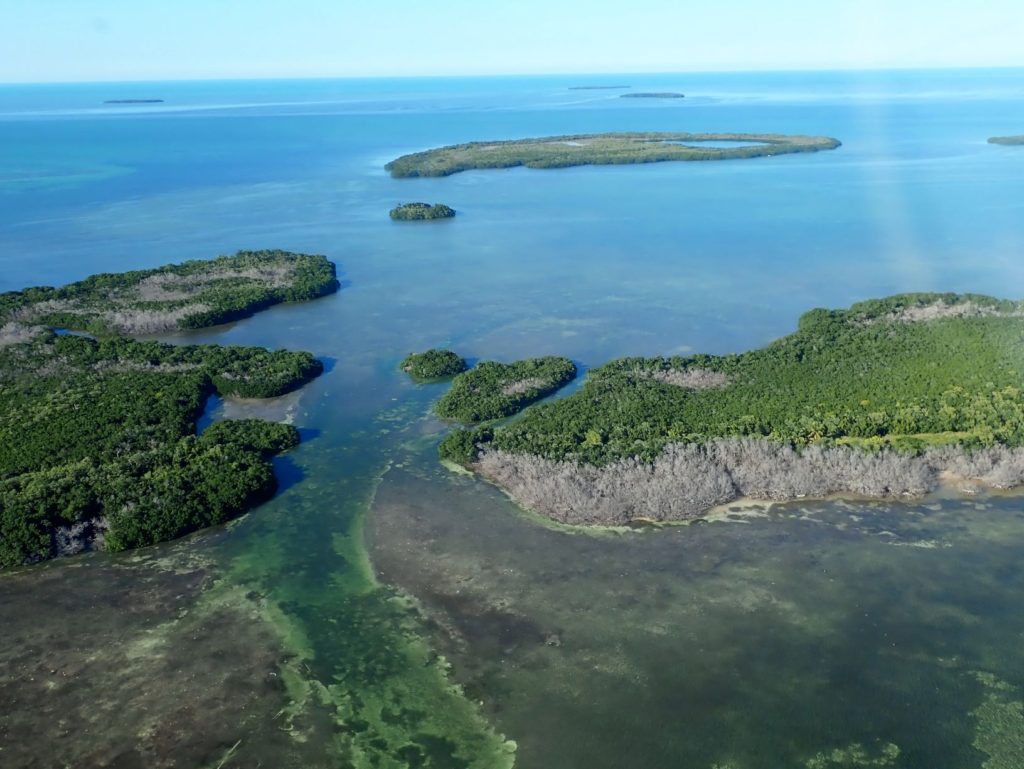
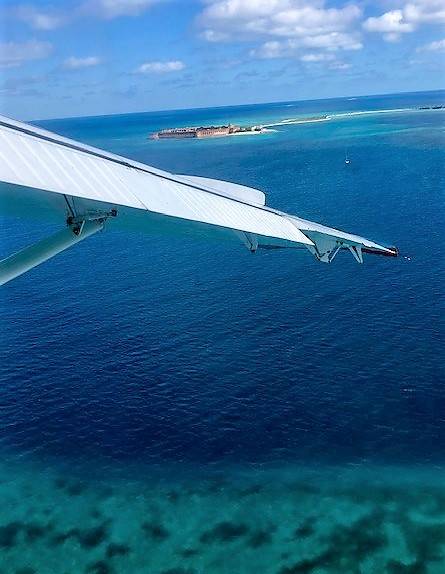
Our pilot circled the Garden Key before landing, in order to give us a great aerial view of Fort Jefferson. Built in the shape of a hexagon, the Fort is built from over 16 million bricks and holds the honor of being the largest brick structure in the western hemisphere. Construction of the fort began in 1846. Despite 30 years of on-going construction, mostly by slaves, prisoners, and Irish immigrants, the fort was never actually finished.
Fort Jefferson takes up the majority of Garden Key’s 14 acres. You can sign up for a tour with the National Park Service, or wander around the labyrinth of hallways within the fort and on its roof on your own. There are several restored cannons on the grounds. The Fort’s largest guns weighed 25 tons and could fire a 400 pound cannon ball three miles. Cannon balls could also be heated in order to create the greatest amount of damage to a wooden boat. In spite of all of the impressive weaponry, not a single shot was ever fired from Fort Jefferson.
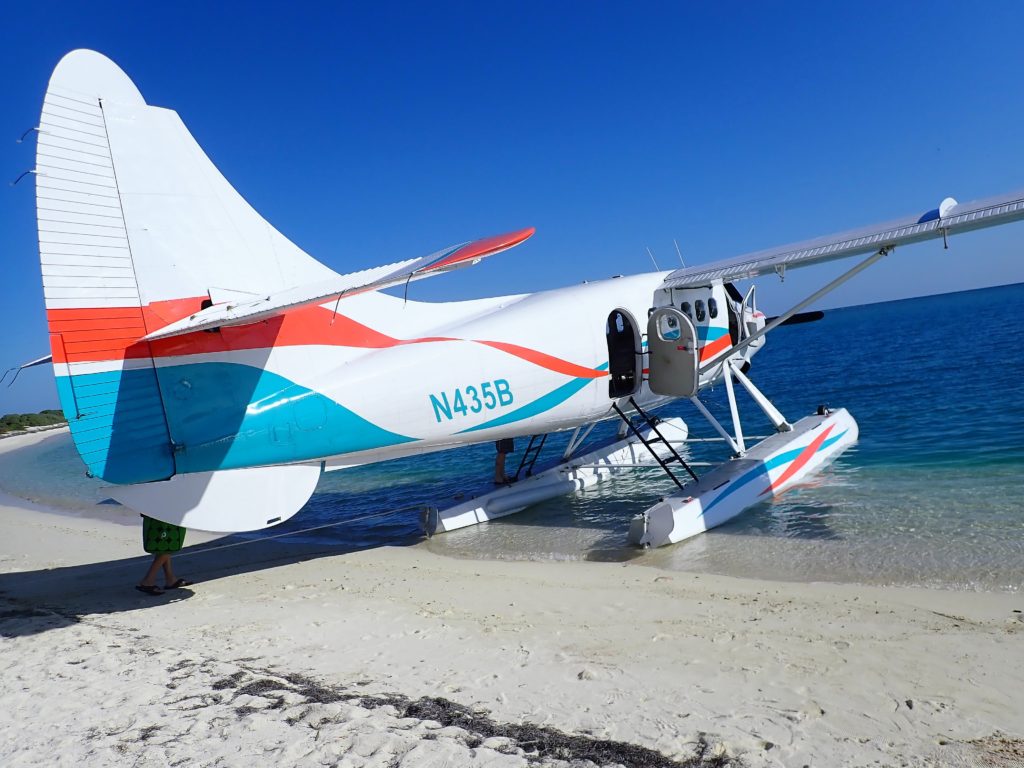
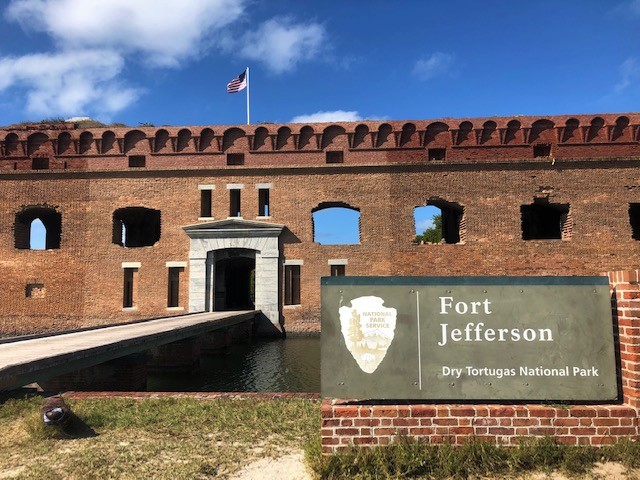
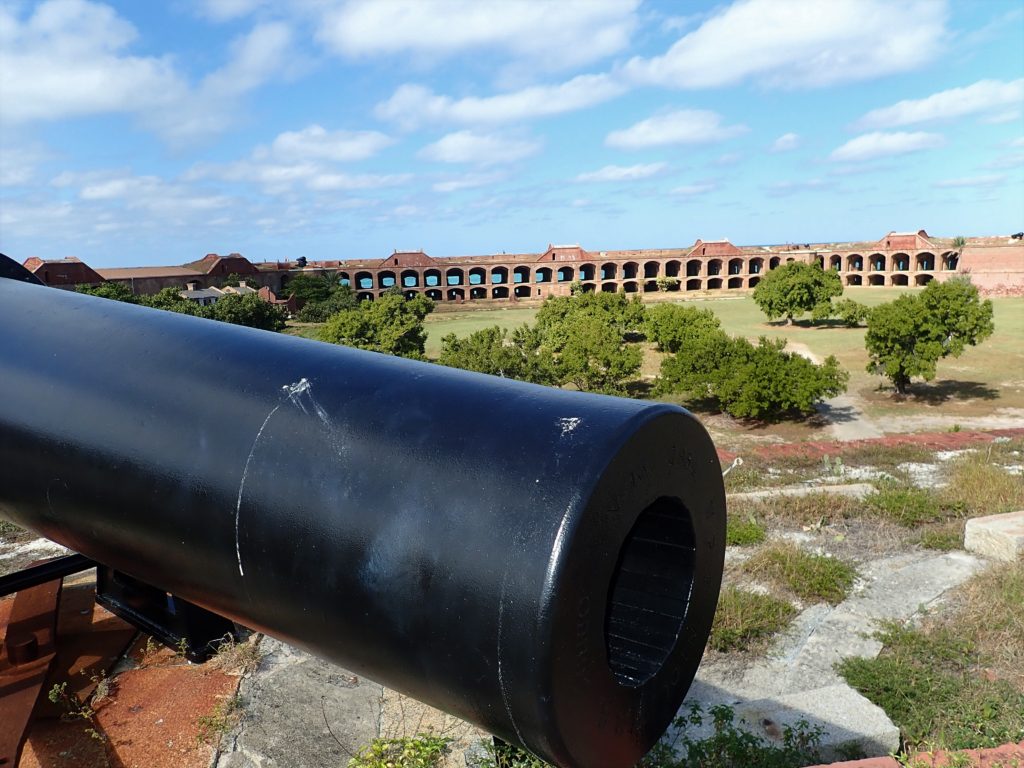
The Fort walls encircle the Parade Grounds, eight acres of arid field. We trudged across it in the baking sun, encountering a single hermit crab crawling through the grass along the way. We were glad to enter the cool interior of the Fort on the other side. We visited in December, a relatively cool time of year. It was inconceivable to imagine soldiers doing miltary drills here in the oppressive heat of the summer.
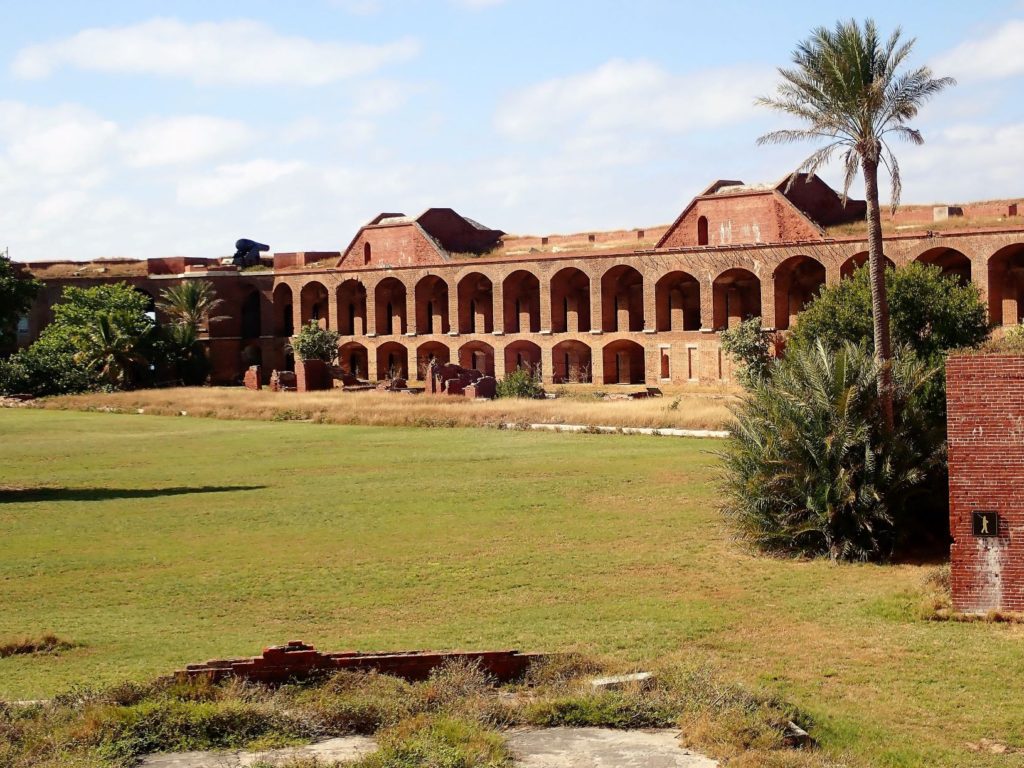
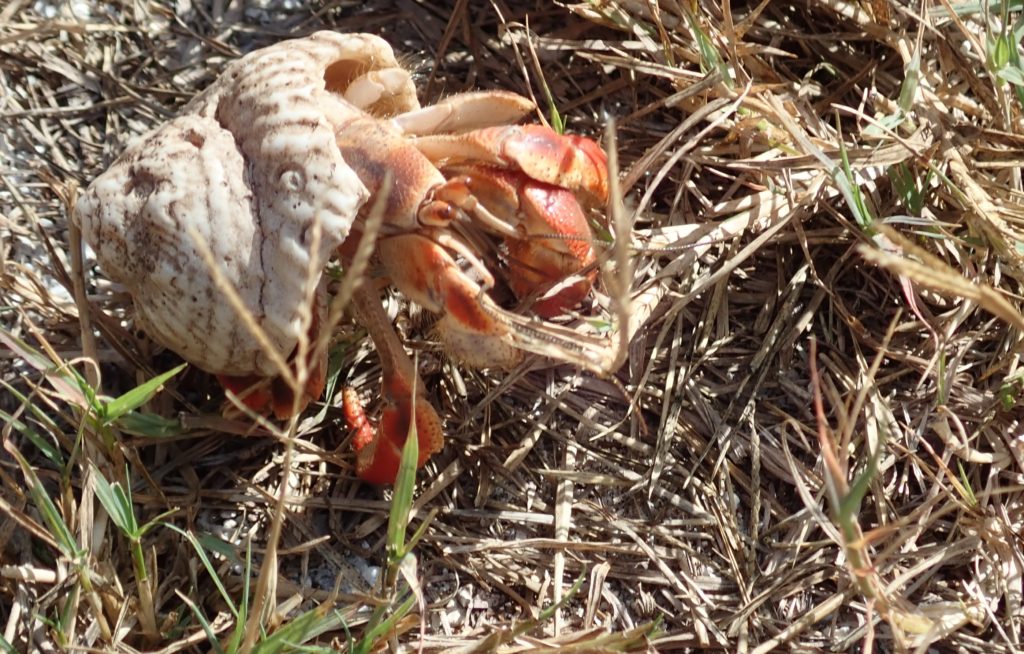
Fort Jefferson served as an island prison during the Civil War. The majority of the prisoners were Union soldiers charged with desertion. Its most famous prisoner? Dr. Samuel Mudd. He was the physician who set the broken leg of John Wilkes Booth after Booth shot President Abraham Lincoln at Ford’s Theater. Dr. Mudd was convicted of aiding and conspiring in a murder, and he was sentenced to hard labor and life in prison. He was sent to the Dry Tortugas in 1865, and suffered the squalid conditions there until an outbreak of yellow fever raged within the Fort. Before it was over, almost all of the Fort’s inhabitants became ill, and a number of them died. Dr. Mudd worked relentlessly to care for the sick, and he played an important role in discovering that yellow fever is spread by mosquitoes. President Andrew Johnson pardoned Dr. Mudd in 1869 for his work in caring for yellow fever patients at Fort Jefferson.
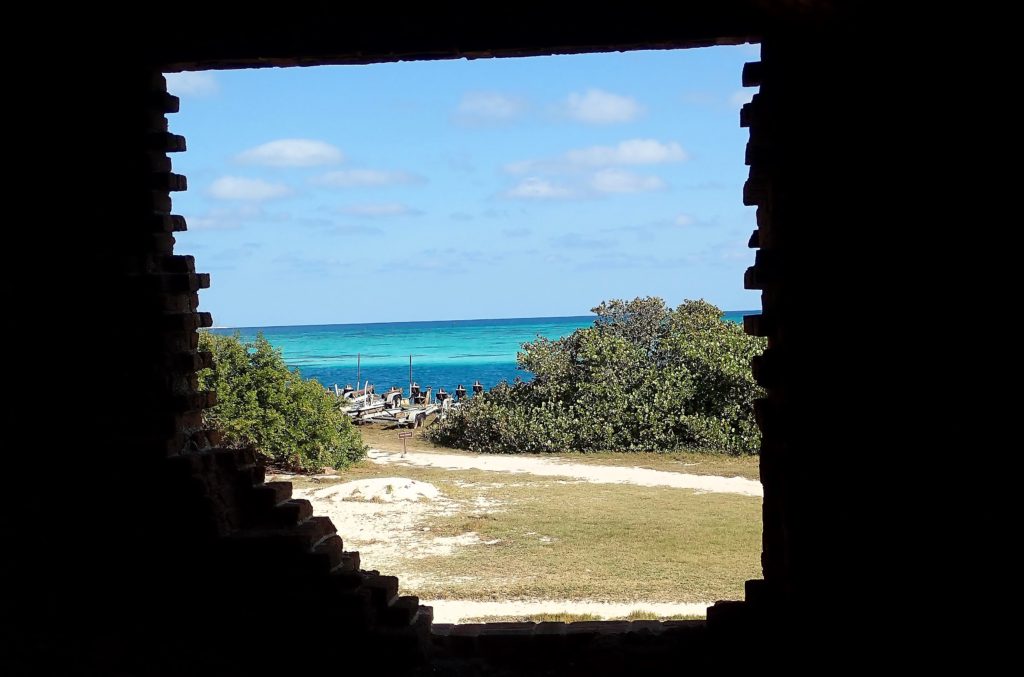
You can still see out Dr. Mudd’s cell on the bottom level of the fort where he was imprisoned for a time. He also stayed in another room on the second level. There are multiple little holes and trenches dug into the floor. According to Dr. Mudd in a letter to his wife, ” “We have a hole dug in the floor and little trenches cut. After every rain, our quarters leak terribly, and it’s not unusual to dip up from the floor ten and twelve large buckets of water daily.” Read more about the history of the fort and things to do in the Dry Tortugas in The Dry Tortugas National Park News.

One of the highlights of our day was walking around the moat wall that encircles the Fort. In addition to creating a barrier for potential invaders, the moat wall was also built to protect the fort from wave action. Just over a half mile long, the moat wall gave us a great opportunity to see a variety of coral, fish, jellyfish and sea urchins close up. The views of the Gulf and the incredibly turquoise water were spectacular.
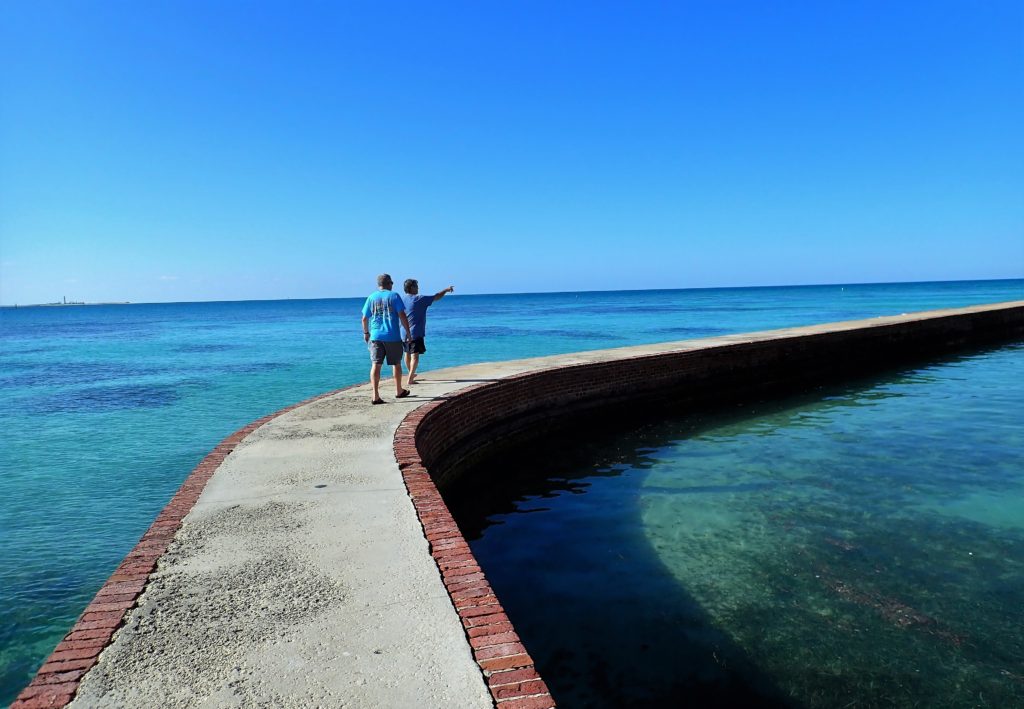
Snorkeling is another very popular activity around The Dry Tortugas. The shallow water around Garden Key makes for great snorkeling opportunities, even for beginners. David and I did go in the water for a quick snorkel, but it was breezy at the time. The wave action churned up the sand, which made it difficult to see clearly. We snorkeled our way into a large school of tarpon, along with a few grouper mixed in, among the metal pilings of an old coal dock. We didn’t linger, though, because the waves made it difficult to avoid brushing up against the pilings.
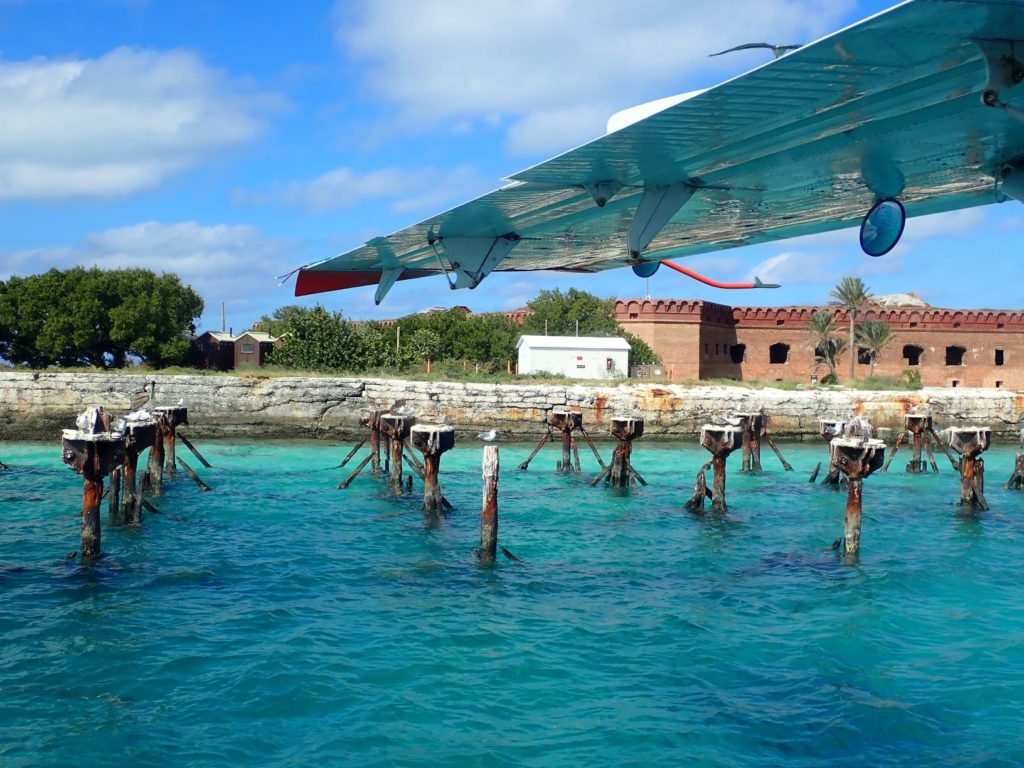
The seaplane excursion is a once-in-a-lifetime experience, and the cost reflects that. Half-day tours are $360 for adults and $288 for children ages 12 and under. The flight each way takes 40 minutes, giving you about 2 and a half hours on the island. A full day trip costs $634 for adults and $288 for children, with 6 and a half hours of island time.
The Yankee Freedom provides daily ferry service to The Dry Tortugas, weather permitting. The high speed catamaran boards each morning at 7:30 am and returns to Key West around 5:15. Sailing time is a little over 2 hours each way. Breakfast and lunch are included, and there is a snack bar with snacks and beverages available for purchase. Cost is $180 for adults and $125 for children. Find out more about sailing with The Yankee Freedom on the official website.

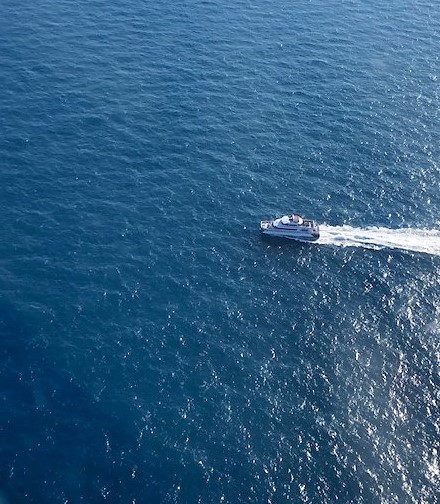
There are eight overnight camping sites on the Garden Key for those up for a unique camping adventure. If you are interested in spending the night, be sure to check out the National Park Service’s camping guidelines. There are composting toilets for campers to use. However, the system is fragile. In order to avoid overload, the toilets are closed each day between the hours of 10 am and 3 pm while the Yankee Freedom is present. Everyone on the island is asked to use the restrooms aboard the Yankee Freedom whenever the boat is at the dock.
Best time to go to the Dry Tortugas? The calm waters of summer are perfect for swimming and snorkeling. Shoot for the early summer, though, as late summer can bring hurricanes. Avid birders may prefer the spring, as many species of birds make a rest stop during their annual migration. Sea turtles nest on the beaches between May and October, but your best chance of seeing them will be out in the water. The beaches are closed during times of mating and hatching to protect the turtles. Winter brings storms and rougher water, but it can be a great time to go if your goal is to avoid the crowds.
Whenever you decide to go, be sure to pack a bag with sunscreen, bottles of water, a snack or two and swimming towels. You can pack in your own snorkeling gear, or use the equipment provided by both Key West Seaplane Adventures and the Yankee Ferry.
Remember, these small islands are just above sea level. Climate change and rising sea water are eroding many of the beaches in the Dry Tortugas. One island, called Bird Key, has already disappeared. So the very best time to visit? Soon. Definitely soon.

I called my folks to update them on our latest adventure. My dad, a Civil War aficiando, was a bit incredulous when I asked, “Have you ever heard of the Dry Tortugas?” He responded, “Do you mean to say I dragged you to all of those Civil War battlefields for nothing?” Well, I do remember that when I was in junior high my family spent a good amount of time touring Gettysburg, Antietam, Sharpsburg, Shiloh, Harper’s Ferry, Manassas, Fredericksburg, Chancellorsville, Spotsylvania, Appomattox Court House… I even recall my adolescent mindset: “Really? Another field with a sign and a split-rail fence?” True Confession: I regret my teenage attitude and know that I would appreciate touring those battlegrounds so much more as an adult!
I actually do remember learning about Dr. Mudd back then, thinking that was the perfect name for someone who was an accessory to murdering the President. In my ever-so-vivid imagination, I pictured him standing in court announcing, “My name is Mudd.” Apropos!
But my father never, ever dragged me to the Dry Tortugas and Fort Jefferson to view Dr. Mudd’s cell. I definitely would have remembered that.

We love getting to know our travel destinations, and we are always seeking to engage with the local community and its residents. We recently created a guide describing our favorite ways to connect with local people during our travels.
Enter your name and email address below and our free guide will be on its way to your inbox!

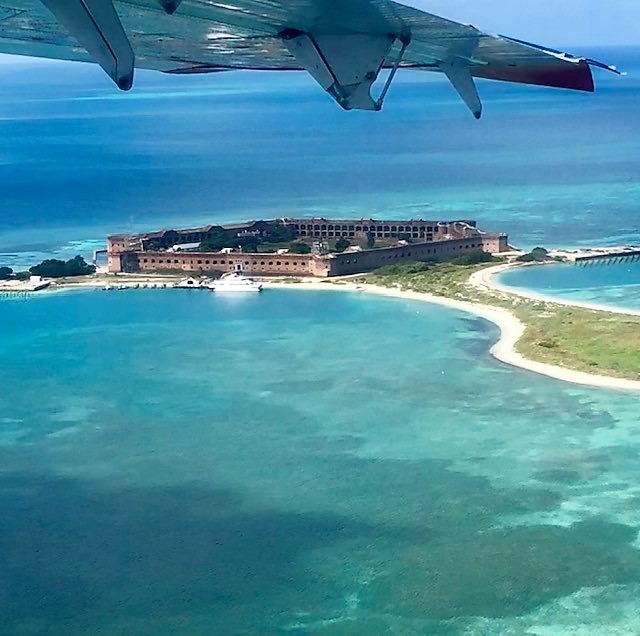
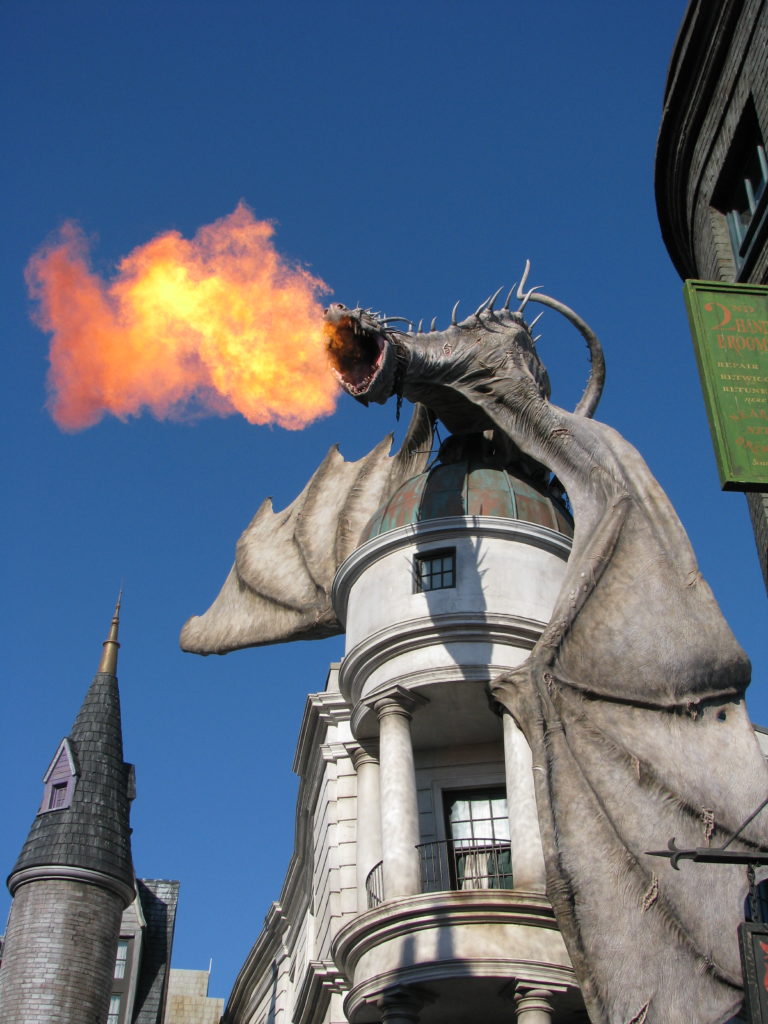
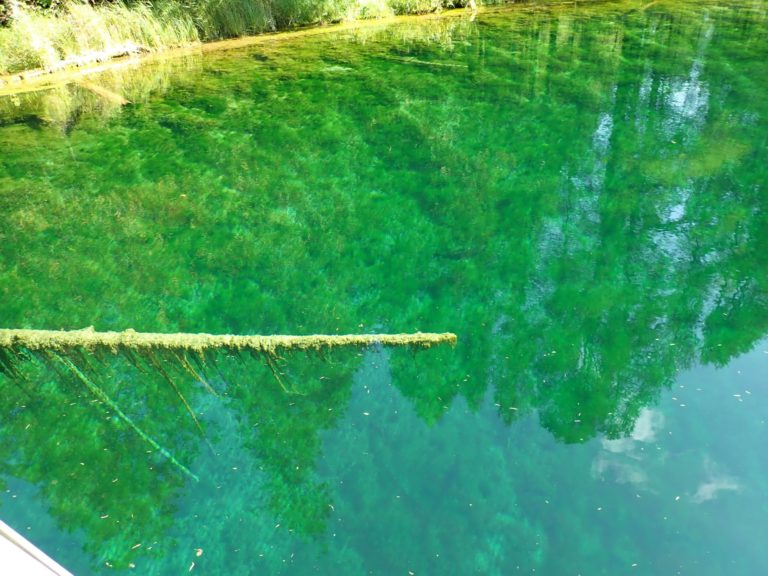
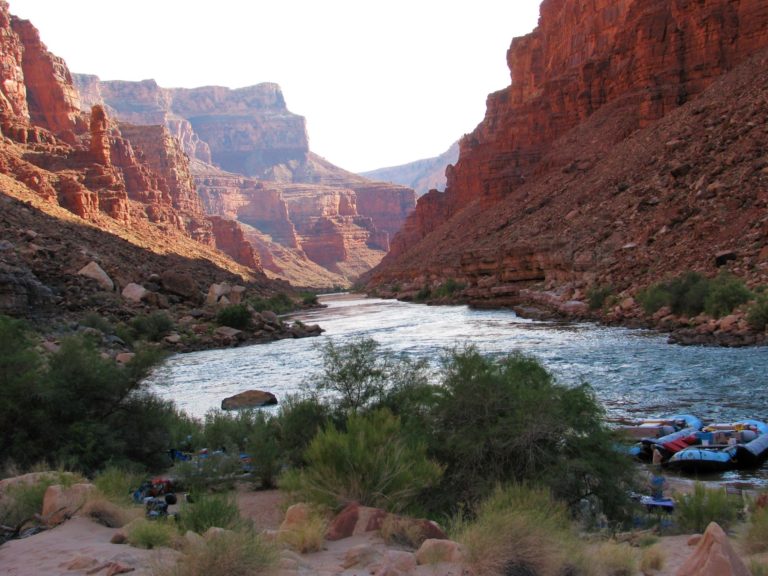
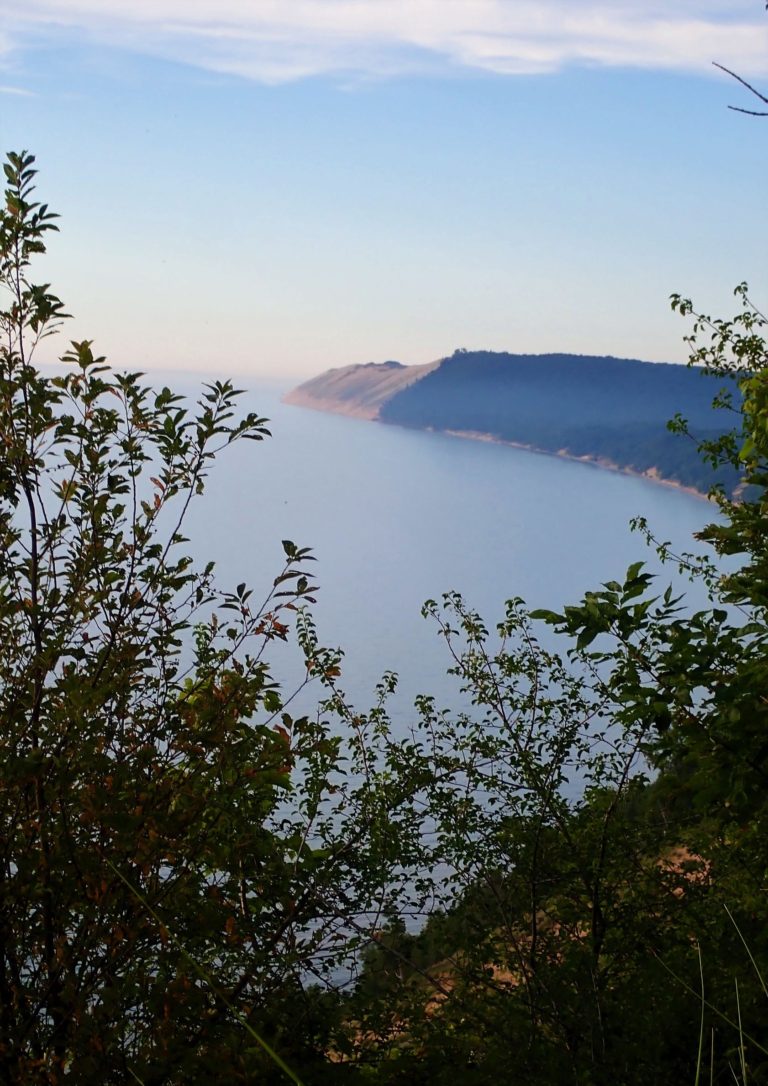
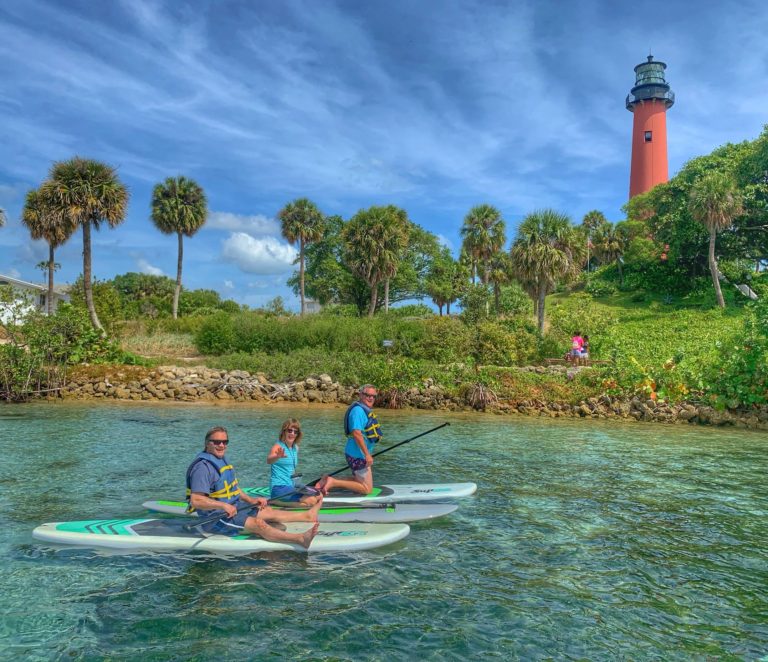
Wow what an experience. This is a new place to me. Thanks for sharing!
It was new to me as well. We had such a wonderful day!
Tortugas looks like a lovely place to visit
Definitely on my list of travel gems!
We have been planning on doing an overnight here and spend time snorkeling!
An overnight would be awesome! We were there for a day trip and wished we had more time for snorkeling.
Oh those waters look so inviting!
We could not get over the spectacular turquoise color!
Your pictures are lovely. The Dry Tortuga’s is on my bucket list.
Thanks! It is an unforgettable experience.
Now I want to go! I love history and snorkeling!
Sounds like The Dry Tortugas would be a perfect vacation site for you!
What an adventure! Key West is on our bucket list and this would be amazing to add to it.
I certainly hope you are able to travel there one day.
Great post! I have never heard of dry tortugas. I will definitely be adding this to my bucket list of travels!
Nissa, I genuinely hope that you will be able to go one day.
Looks like a great trip! It’s on our bucket list for sure.
I hope you love it as much as we did.
That water! 😍
I know, right?
My 16-year old just mentioned Tortugas yesterday…I think he was referencing Pirates of the Carribbean. I’ll have to show him this post!
Really! I’m going to have to check out Pirates of the Caribbean again,to see what this reference is!
We’ve been to Key West several times but have never heard of this. We’ll definitely check it out next time!
We had been to Key West before as well. Always up for a new adventure!
Wow.. I have never heard of Tortugas before..looks like an amazing place to visit !
It really is amazing. So glad we were fortunate enough to travel there.
I have wanted to go to Key West for so long!! Your post makes me want to go even more.
Key West is awesome even without the Dry Tortugas. I hope you can make it to both places someday.
Looks great! I’ve heard of it, but haven’t done the research into planning a trip yet.
I hope there will be a trip to The Dry Tortugas in your future!
What a beautiful hidden gem. I would love to take my family here for a day, but don’t know if we could afford that for a family of 6. Thanks for sharing your adventure.
I understand completely. This kind of trip is normally way beyond our budget. Once in a lifetime for us!
What a beautiful and historic place to visit. Thanks for all the photos and info!
Fort Jefferson really does have a lot of exciting history!
Would love to visit! Looks amazing!
Thanks for commenting, Jordan. Looking forward to the day when travel restrictions are lifted so we can once again head out in search of new adventures.
How cool! And to think, you could have missed out on that!
No kidding! We are so thankful that the couple that we were with knew about it.
That looks like fun! We heard about the Dry Tortugas while visiting a museum in Key West. I think I would take the boat trip instead of plane…but it looks like a cool place!
I loved seeing so much from the air, but the ferry has its advantages as well. If we do go again, I’d like to take the ferry for a different experience.
All of the times I have been to the Keys and I never do this! I need to as soon as they open back up!
I know, right? I hadn’t been aware of it, either.
What an interesting place! I have enjoyed a few Civil War places when I lived in Pennsylvania and Mississippi but I never heard of this place.
You would love all of the history at Fort Jefferson.
How cool is this! I have not heard of Dry Tortugas. Thank you for “taking” me there!
Thank you for your support! Always love to hear about new places.
What a worthwhile trip, I’ve never heard of the Dry Tortugas before this either!
We have such fond memories of The Dry Tortugas!
Fantastic destination. Looks AMAZING!
Thanks for commenting! It really was an amazing day.
Wow, this looks like a great place to put on my travel list.
Thanks for reading my blog. I highly recommend The Dry Tortugas!
Beautiful waters! The idea of going somewhere only accessible by boat or plane is a great idea!
It truly was an incredibly memorable experience.
I think I’ll have to visit Key West again, maybe via seaplane! That looks like such a great adventure – thank you for sharing it!
I hope we all will have the opportunity to travel again soon. Thanks for commenting!
That looks beautiful!
Thanks for commenting! It really is so beautiful.
Wow, looks amazing Will keep this in mind next time I am in Florida.
Thanks for commenting! I do hope you can make it to the Dry Tortugas one day.
Wow the water is so clear! To think Hawaii’s water used to look like that before. After this blog, it may not be the least visited National park any more. heehee. So beautiful!
Definitely a gem waiting for more people to discover it!
Ohhh the water is gorgeous!!! We are just introducing our kids to snorkelling… this looks like the perfect place to add to our list!!
We were blown away by the color of the water. I hope you can take tour family there!
Wow what an experience! Thanks a lot for sharing this, I will save it for coming travel 😀
That looks like a great place to visit! I’m not sure about the small plane? When we were at the museum in Key West, we learned about the Dry Tortugas. I would like to go there someday! Thanks for the great post & photos!
The small plane was a surprisingly smooth ride. We were so excited about the view that we didn’t even think about being inside of a small plane.
I’ve never heard of Dry Tortugas but looks beautiful!
I love this! We didn’t do this several years ago when we were at KeyWest and it kills me that we didn’t go. Especially now that we have a national parks passport!
Sarah, you’ll have to go back someday! We also did not have all the time that we wanted in Key West. We’d like to go back and take a jet ski tour around the island.
The Dry Tortugas look so inviting, and a seaplane ride over there really does look like a once in a lifetime opportunity. I would love the adventure of camping out there for a night or two.
I’m with you. We did a day trip but I’d love to camp overnight there.
Wow this looks gorgeous! I always thought Key West would be a great place to visit so thanks for sharing the encouragement.
Key West truly is a special place. I hope you can make it there one day!
Key West was the first stop for the cruise ships during the winter season, so I’d be there every Sunday, but I never flew over to Dry Tortugas. I missed out on great history and scenery, it seems:(
I wouldn’t complain about being in Key West every Sunday! Maybe one day in the future you can make it to the Dry Tortugas.